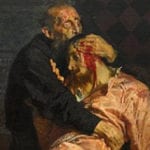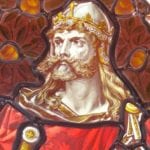 Mysteries
Mysteries  Mysteries
Mysteries  History
History 10 Surprising Stories About the Texas Rangers
 Humans
Humans 10 Philosophers Who Were Driven Mad by Their Own Theories
 Miscellaneous
Miscellaneous 10 Video-Game-Worthy Weapons and Armors from History
 Weird Stuff
Weird Stuff 10 Psychics Who Accurately Predicted Wartime Events
 The Arts
The Arts 10 Pieces of Art Inspired by a Broken Heart
 Health
Health 10 Science Fiction-Sounding New Medical Treatments
 History
History 10 Surprising Facts About the Father of Submarine Warfare
 Space
Space Ten Astonishing New Insights into Alien Worlds
 Weird Stuff
Weird Stuff 10 Bizarre Summer Solstice Rituals Still Practiced Today
 Mysteries
Mysteries Top 10 Haunting Facts About the Ghost Ship MV Alta
 History
History 10 Surprising Stories About the Texas Rangers
 Humans
Humans 10 Philosophers Who Were Driven Mad by Their Own Theories
Who's Behind Listverse?

Jamie Frater
Head Editor
Jamie founded Listverse due to an insatiable desire to share fascinating, obscure, and bizarre facts. He has been a guest speaker on numerous national radio and television stations and is a five time published author.
More About Us Miscellaneous
Miscellaneous 10 Video-Game-Worthy Weapons and Armors from History
 Weird Stuff
Weird Stuff 10 Psychics Who Accurately Predicted Wartime Events
 The Arts
The Arts 10 Pieces of Art Inspired by a Broken Heart
 Health
Health 10 Science Fiction-Sounding New Medical Treatments
 History
History 10 Surprising Facts About the Father of Submarine Warfare
 Space
Space Ten Astonishing New Insights into Alien Worlds
 Weird Stuff
Weird Stuff 10 Bizarre Summer Solstice Rituals Still Practiced Today
10 Best Kings Followed By Terrible Sons
Many kings of Europe have existed who were absolutely essential to the development of the continent. From Byzantine emperors to kings of countries such as England, Spain, and France, being a ruler must have been a mantle which not everyone was ready to live up to. Some rose to the challenge; others didn’t fare so well.
Some of the best kings in history have been followed by completely underwhelming and sorry reigns from their own bloodline. It’s a narrative that has been told in many forms: trying to live up to a father’s legacy. Read on to find ten of the best kings to have been followed by their completely disappointing sons.
10 Edward II
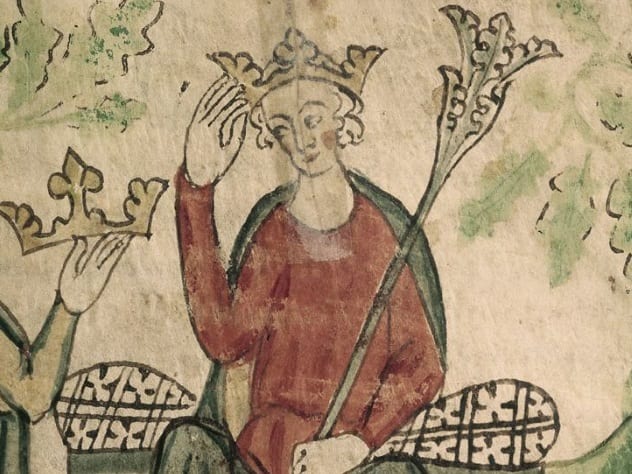
Poor Edward II had big shoes to fill when his father, King Edward I of England, died suddenly in 1307. Edward I, known as Edward Longshanks, was a formidable king of England who is most famous for crushing William Wallace’s rebellion and having him hanged, drawn, and quartered. Edward I was also credited with staving off a rebellion from Wales, too, eventually naming his son, Edward II, as the first-ever English prince of Wales.
When Edward II was crowned monarch in 1307, the expectations were high for the young king. His reign was marred by the loss at the Battle of Bannockburn, when he was defeated by Robert the Bruce of Scotland, eventually having to flee back to England humiliated. Edward II also alienated himself from his advisors and his own wife by reportedly having relationships with men who were his “favorites.” Ultimately, he was forced to abdicate in favor of his 14-year-old son, Edward III, and would later be executed under disputed circumstances after being imprisoned. Edward II has been described as Edward I’s only failure.[1]
9 Napoleon II
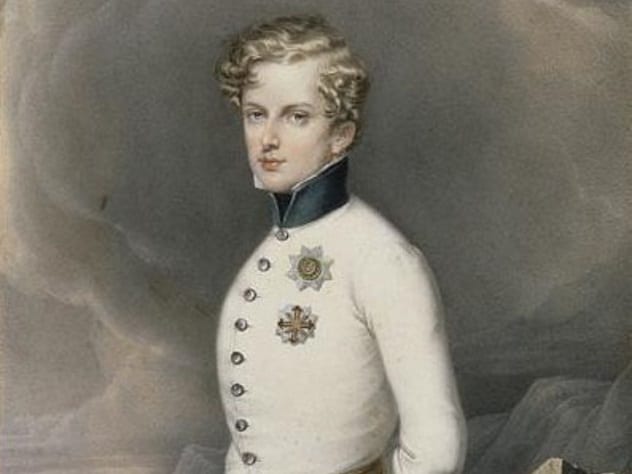
Napoleon II did nothing wrong in his attempt to live up to the gigantic footsteps left by his father, Napoleon Bonaparte (aka Napoleon I), but his life ended very early, and he never lived up to the potential expectations set for him. His father had been possibly the most decorated leader in French history and was the very first emperor of France. He had won multiple battles during the Napoleonic Wars, is still held in high esteem for his military tactics, and was responsible for making the First French Empire one of the greatest in the world during his reign.
The birth of Napoleon’s son was announced to Paris with a “salvo of one hundred cannon shots.” However, after Napoleon lost the Battle of Waterloo, he was exiled and abdicated his throne to his young son. Napoleon II never took the throne and was raised in Austria. Despite fears that he would grow up and try to retake the French Empire, as he still had supporters who held him as the rightful emperor of France, he would end up serving in the Austrian military. He died aged 21 in 1832 of tuberculosis, without ever reigning over the French and without leaving an heir.[2]
8 Edward VIII
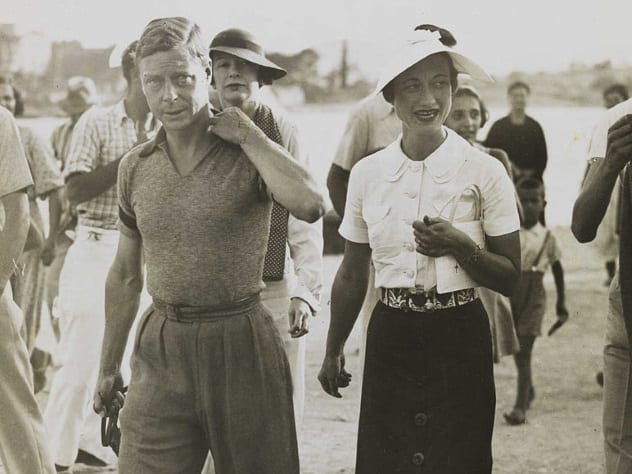
Edward VIII succeeded his father, George V, in 1936 after George had ruled the British Empire for 26 successful years. King George V had grown to become an adored king of England who had navigated his country through World War I, through other countries’ revolutions (see Russia), and through a changing political landscape in England. George had a strained relationship with his eldest son Edward, who was rumored to have a wild social life which included affairs with high-profile women. Edward was deemed untraditional and unpredictable, with George preferring his second-eldest son, Prince George.
When George V died in January 1936, Prince Edward became King Edward VIII. However, before the year was done, he would no longer be king. Edward caused a crisis when he proposed to Wallis Simpson, a divorced US woman who was deemed socially unacceptable to be married to the king of England.[3] Edward VIII abdicated his throne to marry Simpson, causing huge public sensation. He was also rumored to harbor pro-Nazi views and even toured Germany prior to World War II breaking out. He spent most of his remaining life with Simpson outside of England and is barely remembered in the annals of the British monarchy.
7 Charles IV And Ferdinand VII
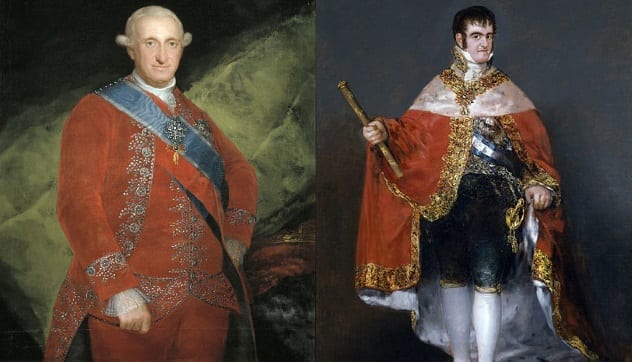
In this instance, we have both a son and grandson who failed to live up to the giant footsteps left by King Charles III of Spain. Charles III ascended to the throne in 1759 and ruled for just under 30 successful years, during which Spain made large strides in its overall identity. His consistent and intelligent leadership saw the country emerge as a contributing nation to Europe, and it was Charles III who was instrumental in creating a flag and a national anthem and spending money on the country’s infrastructure.
When Charles III died in 1788, his son, Charles IV (left above), became king of Spain. Charles IV was unlike his father in the sense that he did not take an active role in politics; he instead deferred the running of Spain to delegates. He was also guilty of making mistakes in switching allegiances between France and Great Britain, which devalued his trustworthiness. He was so disliked by the public that his own son, Ferdinand, attempted a coup to overthrow him.[4]
Ferdinand VII (right above) would eventually take the throne of Spain in 1808. However, he would abdicate under the powerful influence of Napoleon I, only to be reinstalled as monarch in 1813. He would reign until 1833 but would oversee Spain losing many of its territories in America and is largely considered to be one of the worst monarchs to lead the country. It is safe to say that both the son and grandson of Charles III could not live up to the high standard set by him.
6 Louis The Pious
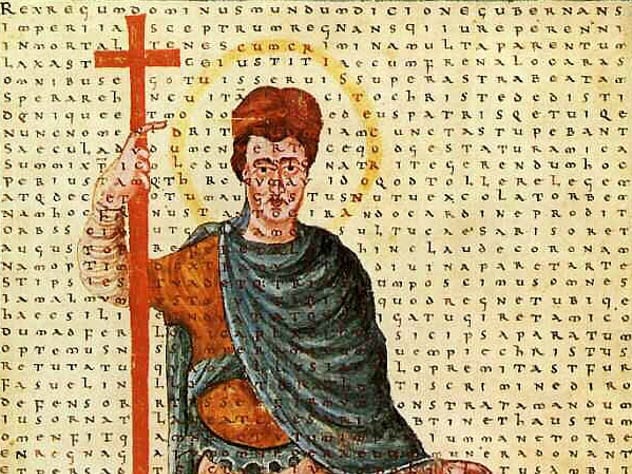
Louis the Pious was king of the Franks and Holy Roman emperor from 814 to 840. He was initially co-emperor with his father, the inimitable Charlemagne, from 813 until the latter’s death in 814. Charlemagne had united many of the areas in Western Europe and enforced Christianity on them, and he is commonly remembered as being the “father of Europe.” When he died, he left behind a continent that had been united under his leadership, and his son took the throne, destined to continue the greatness his late father had forged in the family.
Louis’s own reign lasted 26 years, and whether it was successful depends on how you look at it. He did successfully hold together the Carolingian Empire that his father had created, but he led it directly into civil war. Louis had three sons and divided the empire between them in a succession plan, but this ultimately led to infighting between them. Louis at one point was deposed as ruler and was twice made to publicly confess and atone for sins he had committed.[5] Despite regaining his throne, his authority was consistently undermined, and when he died, Europe erupted into another civil war for the territories.
5 Edward VI
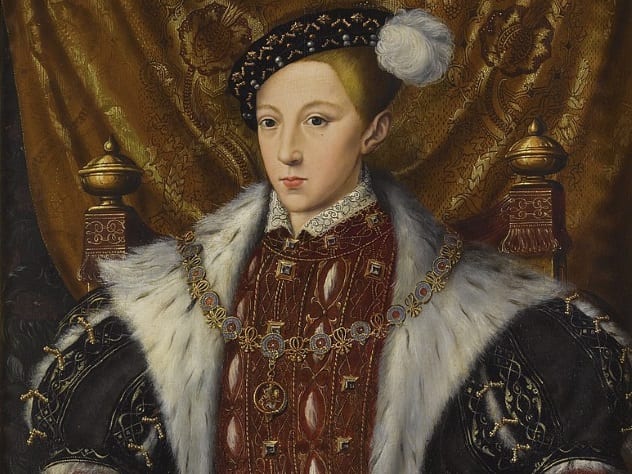
Edward VI followed his father, Henry VIII, to the throne of England and Ireland in 1547, attempting to live up to one of the most famous monarchs in history. Henry VIII was large in stature and legacy, and his reign had completely torn up the rule books. Henry had also gone through six wives in his lifetime in his effort to sire a male heir to his throne, with Edward being the son of his third wife, Jane Seymour.
Edward VI is often said to have been a sickly boy; however, more contemporary accounts say this is not true. He was too young to rule when Henry VIII died, so the country was run by a regency council during Edward VI’s entire reign. The reign suffered from civil unrest and continued war with Scotland, which did not go well. Ultimately, Edward VI’s tenure was short-lived; he developed a fever and would eventually succumb to the illness at only 15 years old.[6] He was said to have shocked onlookers when looking out of his window weeks before his death, as he was gaunt and frail. This is in direct contrast to the might and strength of his father, who he could unfortunately never live up to.
4 John, King Of England
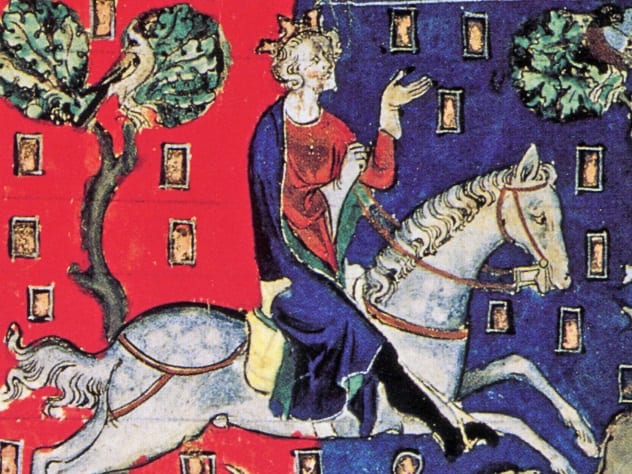
John, the only of his name, was king of England from 1199 to 1216 and followed in the footsteps of one of the most famous kings of England in history—Richard the Lionheart. In this case, John was actually Richard’s younger brother, but John’s father, Henry II, had also been a successful king of England. Henry had laid the foundations for what is now the Common Law in England, and he had successfully established English dominance in Ireland.
John had turned on Richard during one of many family disputes over inheritance and would become king of England in 1199. John’s would be one of the most miserable reigns in English history. His nickname, John Lackland, comes from the fact that he lost many of his father’s lands, including Normandy, which was the original home of the family. John was also said to be paranoid and murderous, with many people perishing at his demand. He was linked with the murder of his 16-year-old nephew, Arthur of Brittany; it is said John killed Arthur in a drunken rage.[7] It goes without saying that John is badly remembered in the history books compared to his father and brother.
3 Constantine III
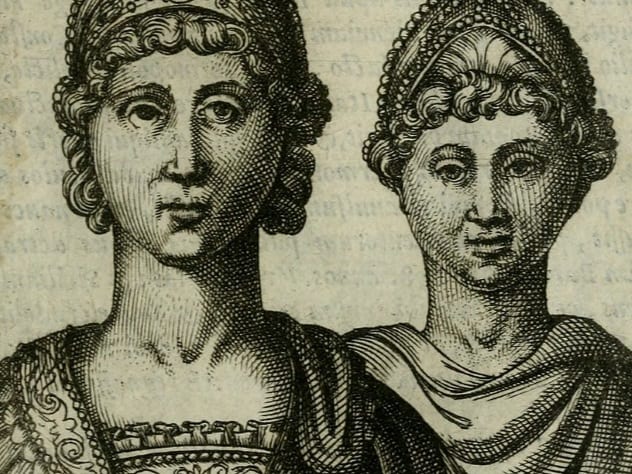
Hercalius Novus Constantinus Augustus, otherwise known as Constantine III, ruled the Byzantine Empire for just four months in AD 641. He had succeeded his father Heraclius, who had ruled steadfastly for roughly 30 years and had developed his people’s standing in the world. Heraclius had won battles against threatening forces such as the Persians and the Arabs, and he had been responsible for officially designating Greek as the language of the empire, instead of Latin. His legacy was assured when he died in 641.
Constantine III, in contrast, took the throne in a shared arrangement with his half-brother Heraklonas. In what sounds suspiciously like a Game of Thrones battle for who would be truly king, Constantine would be dead within four months, leaving Heraklonas as the sole emperor. Constantine also had to deal with a general who wanted payment for loyalty, which he was all but obliged to send. His suspicious death by “tuberculosis” was rumored to actually have been poisoning by Heraklonas’s mother Martina, so Heraklonas was forced to abdicate.[8]
2 Richard Cromwell
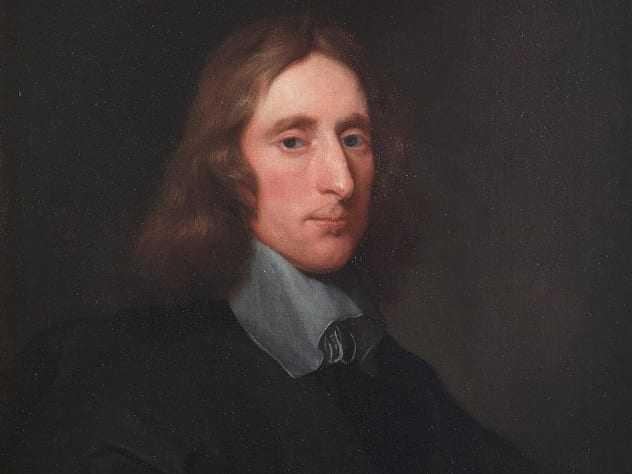
Richard Cromwell was never truly a recognized king in the purest sense, but he still held office as the lord protector of the commonwealth for a time after his father, Oliver Cromwell, died in 1658. Oliver Cromwell had revolutionized the country like no other leader before during the English Civil War, deposing and signing the death warrant of King Charles I and serving as the first-ever lord protector of the Commonwealth of England, Scotland, and Ireland. He successfully navigated his reign as lord protector for five years before his death.
Richard was appointed Oliver’s successor upon his death yet would last less than a year before standing down. His reign was dominated by “much underhand working,” and his lack of authority and presence was seen by many as an opportunity to end the commonwealth.[9] He was known to be lacking in military experience and was said to have been more interested in leisurely pursuits. At one point during his reign, Richard was effectively under house arrest at Whitehall Palace by the army. He was deposed in 1659 and later fled to exile when Charles II was invited back to the throne. He would never see power again, and his reign ended the Cromwell stewardship over Great Britain as swiftly as his father had arranged it.
1 George IV
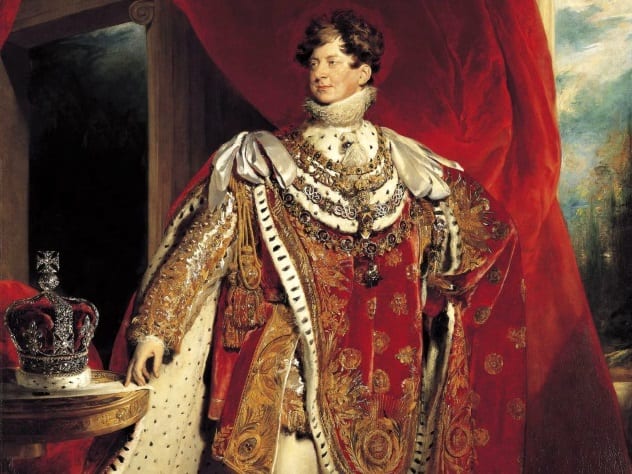
George IV, commonly remembered as the prince regent, ruled over the United Kingdom for ten years after the death of his father, George III. George III had ruled for just under 60 years and is remembered for his advancement of the agriculture of his country but also infamously as the “tyrant” who ruled over what would become the United States prior to the Declaration of Independence. Nevertheless, his son would be undeniably a disappointment and would completely push any lingering doubts people had about the monarchy to the breaking point.
George’s lifestyle was lavish; he fathered many illegitimate children, he racked up debts, he was obese, and he drank heavily. He is remembered for his hedonistic ways rather than the advances the country made under his reign, as his negligible contributions were outweighed by his poor public perception.[10] A British newspaper would write, “There never was an individual less regretted by his fellow-creatures than this deceased king,” when he died. This sums up the reign of George IV, who died leaving no heir to his throne.
N/A
Read about more royal fails on Top 10 Embarrassing Incidents Involving The British Monarchy and 10 Terribly Dysfunctional Royal Weddings.
